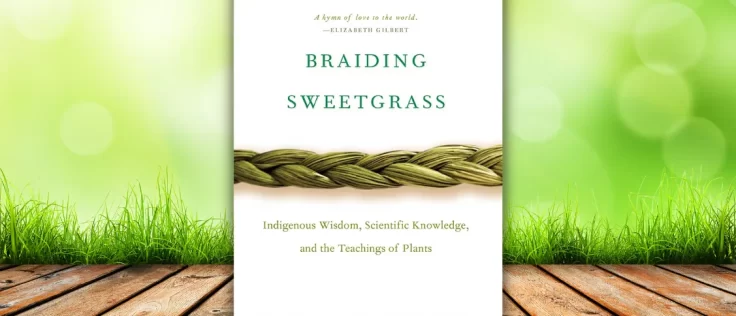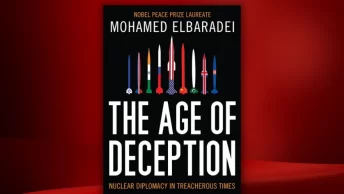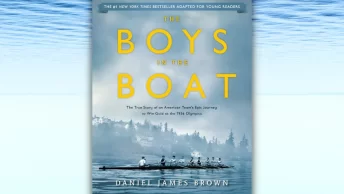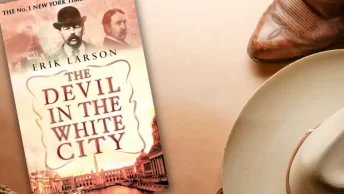Braiding Sweetgrass: Indigenous Wisdom, Scientific Knowledge, and the Teachings of Plants PDF is a book written by Robin Wall Kimmerer, a member of the Citizen Potawatomi Nation and a botanist. The book was published by Milkweed Editions in 2013 and has since become a bestseller.
The book is a collection of essays that weave together scientific knowledge and indigenous wisdom about plants and the natural world. Kimmerer shares her personal experiences as a botanist and member of the Potawatomi Nation and explores how indigenous knowledge can deepen our understanding of the natural world and our relationship to it.
One of the central themes of the book is the idea of reciprocity or the mutual exchange of gifts between humans and the natural world. Kimmerer argues that our relationship with the natural world should be one of respect, gratitude, and reciprocity, rather than one of domination and exploitation. She also emphasizes the importance of listening to and learning from indigenous knowledge and perspectives.
The book is available in multiple formats, including hardcover, paperback, audiobook, and e-book. It has received widespread critical acclaim and has been praised for its beautiful writing, thoughtful insights, and unique blending of scientific and indigenous knowledge.
Table of Contents
Braiding Sweetgrass Summary
The book is made up of a collection of essays, each with a different story or lesson to share. In the first essay, Kimmerer introduces herself and her background as a botanist and a member of the Citizen Potawatomi Nation. She shares stories about her childhood and how she learned to see the natural world as a teacher and a source of wisdom.
In the following essays, Kimmerer explores different themes related to the natural world, including the importance of gratitude and reciprocity, the history of colonization and its impact on indigenous knowledge, and the role of language in shaping our understanding of the world around us.
Throughout the book, Kimmerer shares personal stories and insights about plants and the natural world. She talks about the medicinal properties of different plants, the ways in which plants and animals communicate with each other, and the importance of maintaining biodiversity and ecological balance.
One of the key messages of the book is the idea of reciprocity – the idea that people should give back to the natural world as much as they take from it. Kimmerer emphasizes the importance of showing gratitude for the gifts that nature provides and of working to protect and preserve the natural world for future generations.
Towards the end of the book, Kimmerer explores the concept of “braiding sweetgrass” – a metaphor for the interwoven relationship between people and nature. She talks about the importance of finding balance and harmony in our relationship with the natural world, and of working to protect and honor the gifts that it provides.
Details of Braiding Sweetgrass Book
| Book | Braiding Sweetgrass |
| Author | Robin Wall Kimmerer |
| Original language | English |
| Originally published | 2013 |
| Category | Biography |
| Publisher | Milkweed Editions |
| Total Pages | 408 |
| Format | PDF, ePub |
Braiding Sweetgrass PDF Free Download
Click on the button below to get a pdf file of the Braiding Sweetgrass book.
Multiple Languages Editions of Braiding Sweetgrass Book
Braiding Sweetgrass book is available in multiple languages, including English, Spanish, French, Italian, German, Portuguese, and more.
| Book Editions | Check Now |
|---|---|
| English | Check Price |
| French | Check Price |
| Spanish | Check Price |
About the Author
Robin Wall Kimmerer is the author of “Braiding Sweetgrass: Indigenous Wisdom, Scientific Knowledge, and the Teachings of Plants.” She is a member of the Citizen Potawatomi Nation, an indigenous community in the United States, and is also a botanist and environmental scientist.
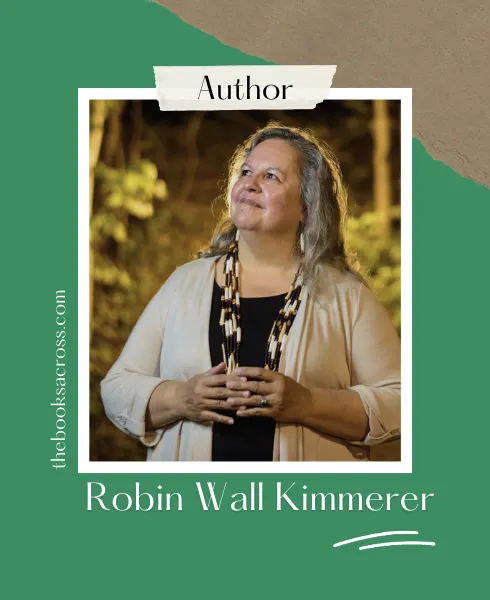
Kimmerer grew up in rural New York State, where she developed a deep love and respect for the natural world. She went on to earn a Bachelor of Science in Botany from the State University of New York at Syracuse and later earned a Master of Science and Ph.D. in Botany from the University of Wisconsin-Madison.
Throughout her career, Kimmerer has focused on understanding the ecological and cultural relationships between people and plants. She has conducted research on topics such as the ecology of mosses, the restoration of degraded ecosystems, and the use of traditional ecological knowledge in modern conservation efforts.
In addition to her scientific work, Kimmerer is also an accomplished writer and poet. She has published numerous essays and articles on the relationship between people and nature, and has also written several books, including “Braiding Sweetgrass” and “Gathering Moss: A Natural and Cultural History of Mosses.”
Similar Books to Braiding Sweetgrass Book
- The Hidden Life of Trees by Peter Wohlleben
- Braiding Lives: A World of Women and Girls Weaving Our Way by Susan Stinson and Wendy Judith Cutler
- The Natural by Bernard Malamud
- Braiding Histories: Learning from Aboriginal Peoples’ Experiences and Perspectives by Peggy Martin Brascoupe and Julia Christensen
- The Overstory by Richard Powers
- The Botany of Desire: A Plant’s-Eye View of the World by Michael Pollan
- The Ecology of Wisdom: Writings by Arne Naess edited by Alan Drengson and Bill Devall
- The Invention of Nature: Alexander von Humboldt’s New World by Andrea Wulf
FAQs(Frequently Asked Questions)
What is the main idea of Braiding Sweetgrass?
The main idea of Braiding Sweetgrass is to explore the interconnectedness of humans and nature, emphasizing the importance of reciprocity, gratitude, and sustainable stewardship of the Earth.
What is the book Braiding Sweetgrass about?
Braiding Sweetgrass combines indigenous wisdom and scientific knowledge to explore our relationship with nature, advocating for an ecological and spiritual approach to land and community.
What did you learn from Braiding Sweetgrass?
Readers of Braiding Sweetgrass have reported learning about indigenous ecological knowledge, the value of reciprocity with the natural world, and the significance of fostering a sustainable and respectful relationship with the Earth.
Is it hard to read Braiding Sweetgrass book?
Opinions on the readability of Braiding Sweetgrass may vary among readers. While some find the book accessible and engaging, others may find certain concepts or writing style require closer attention.

